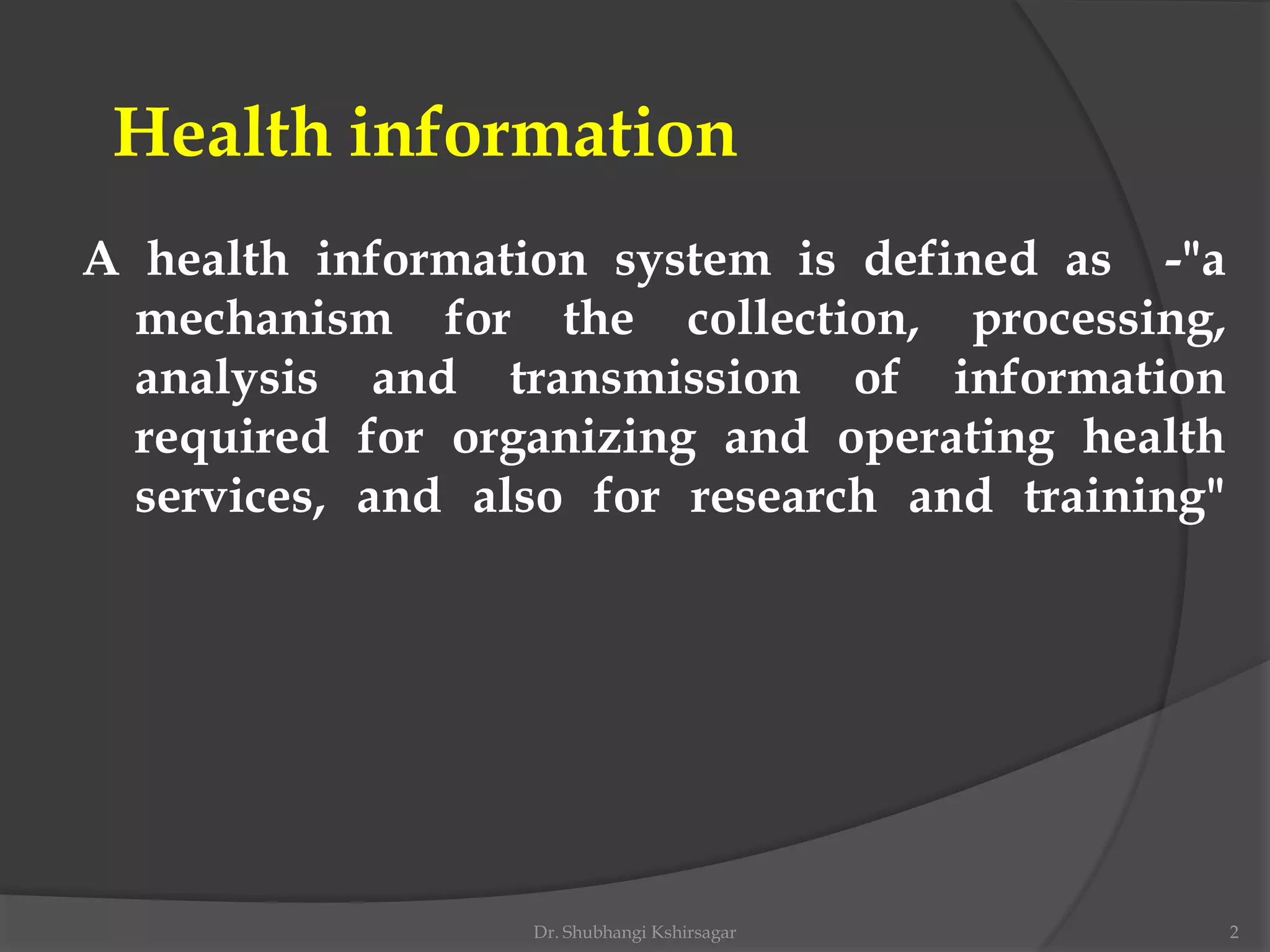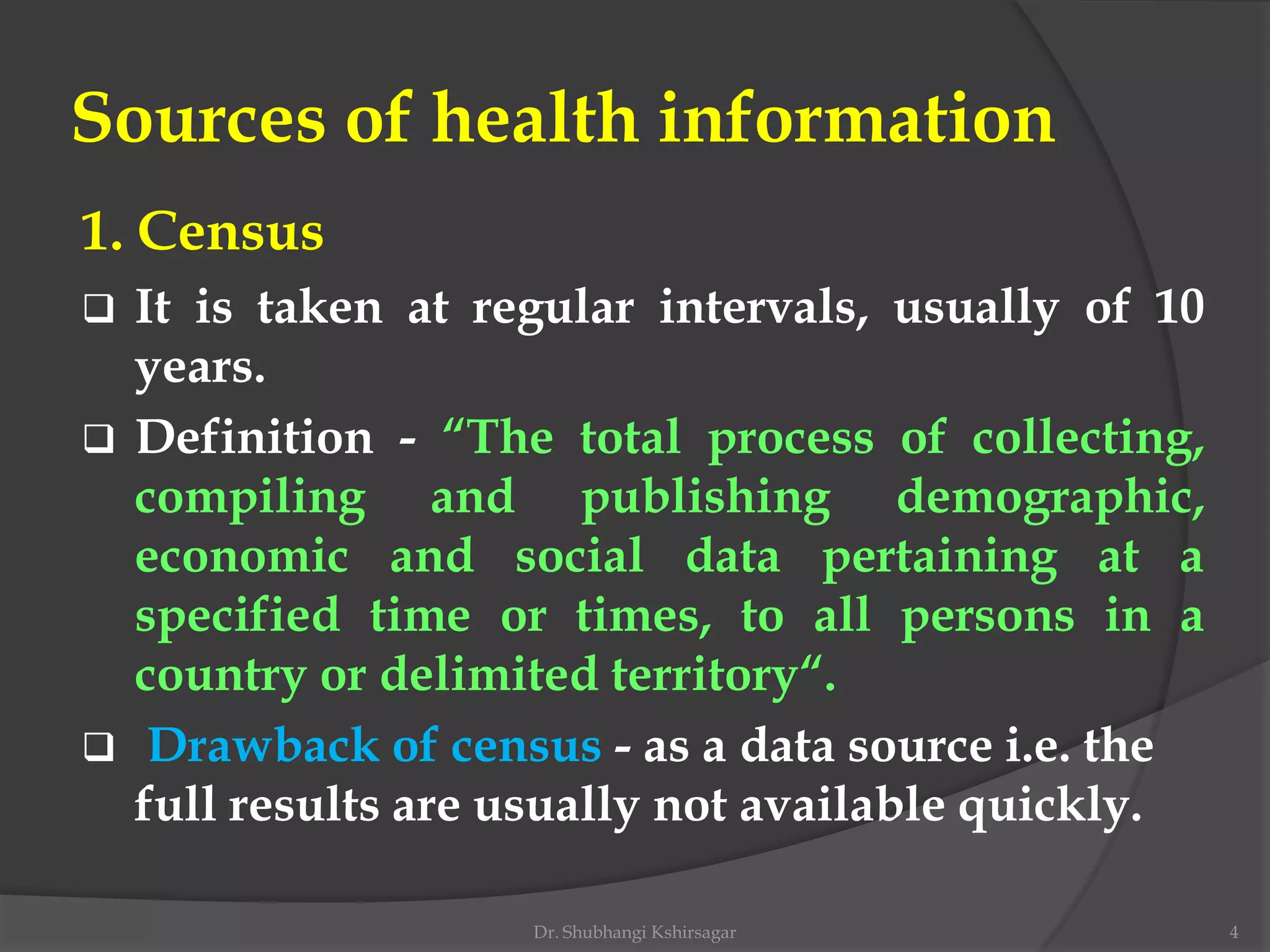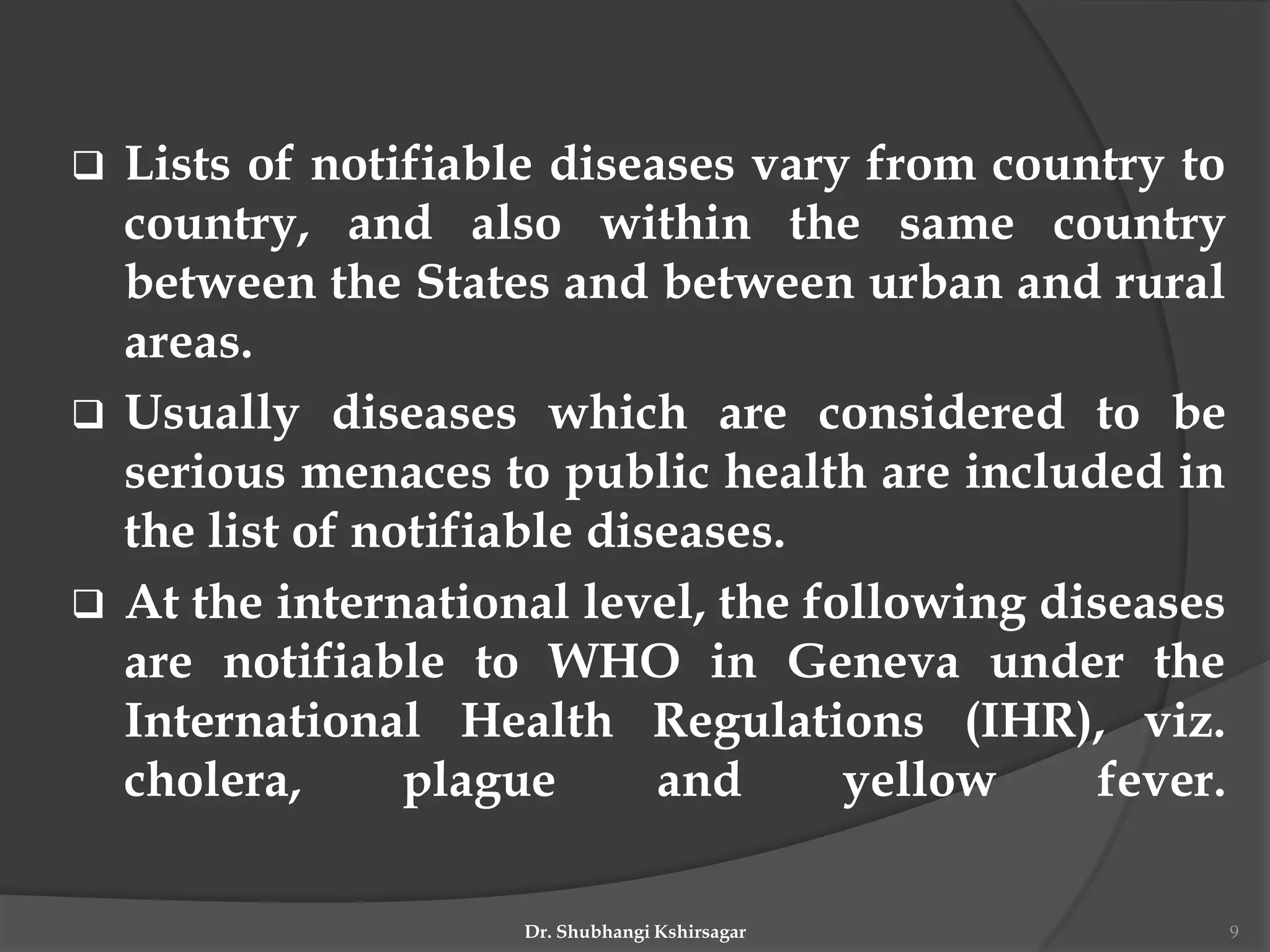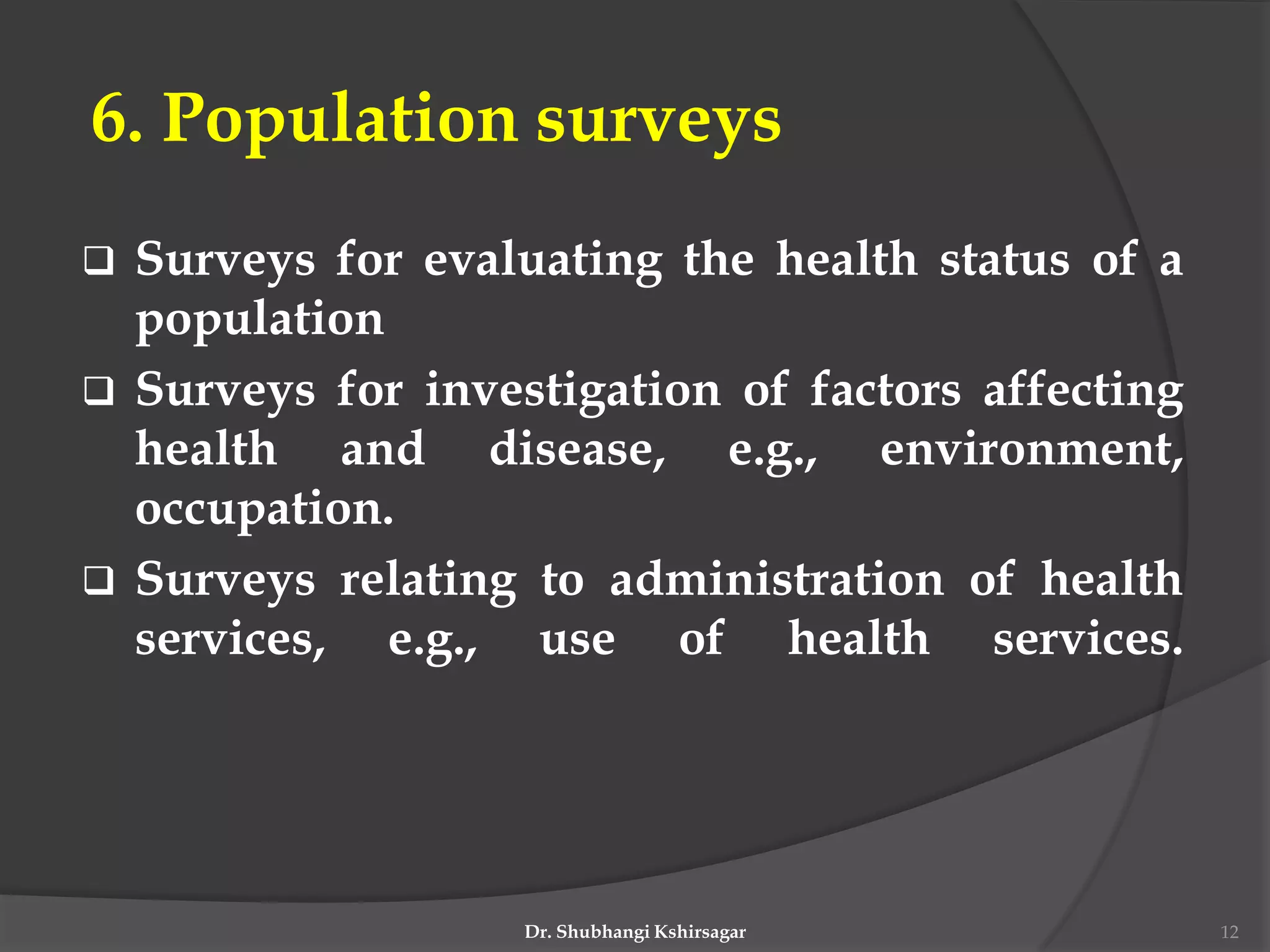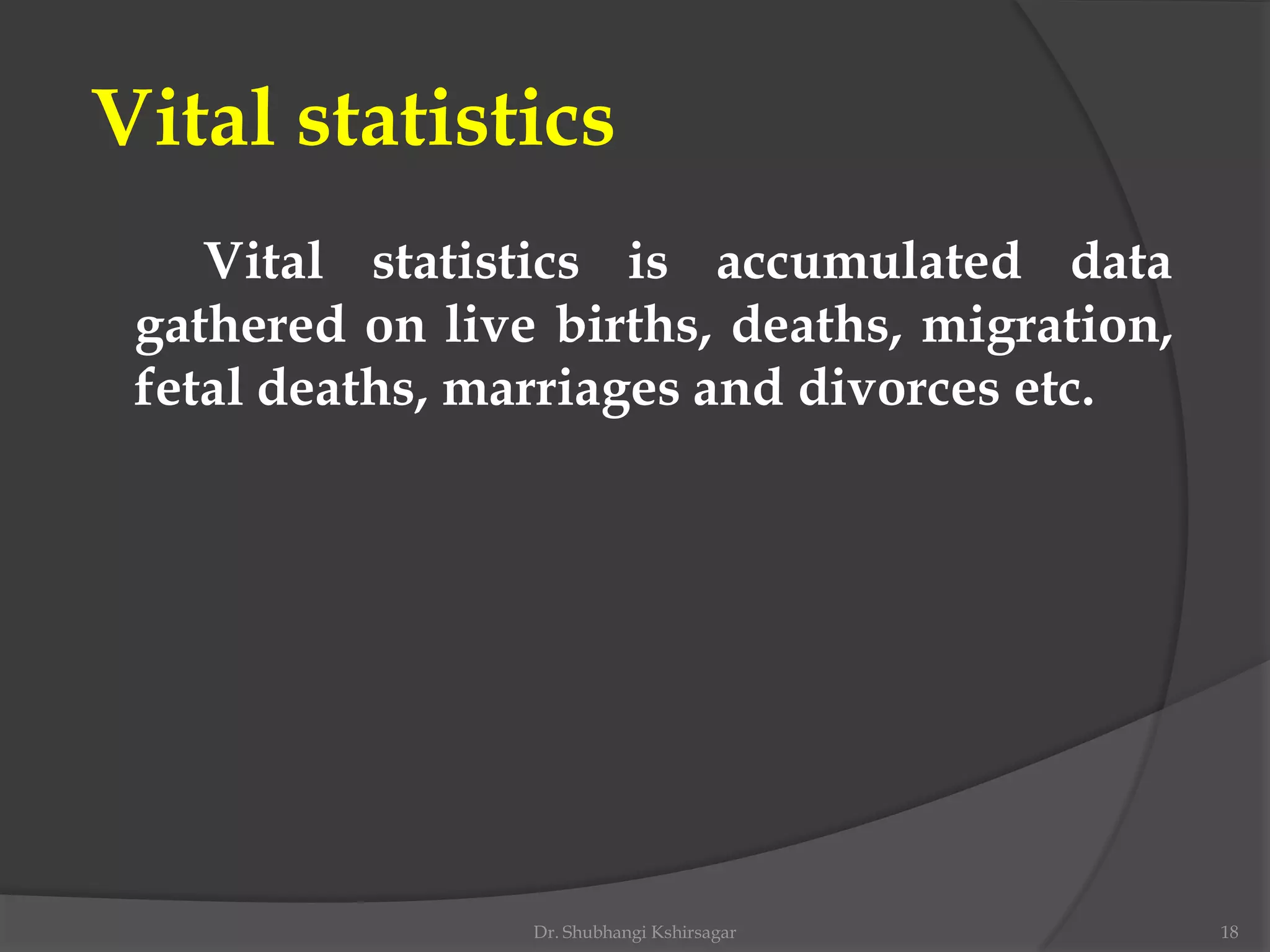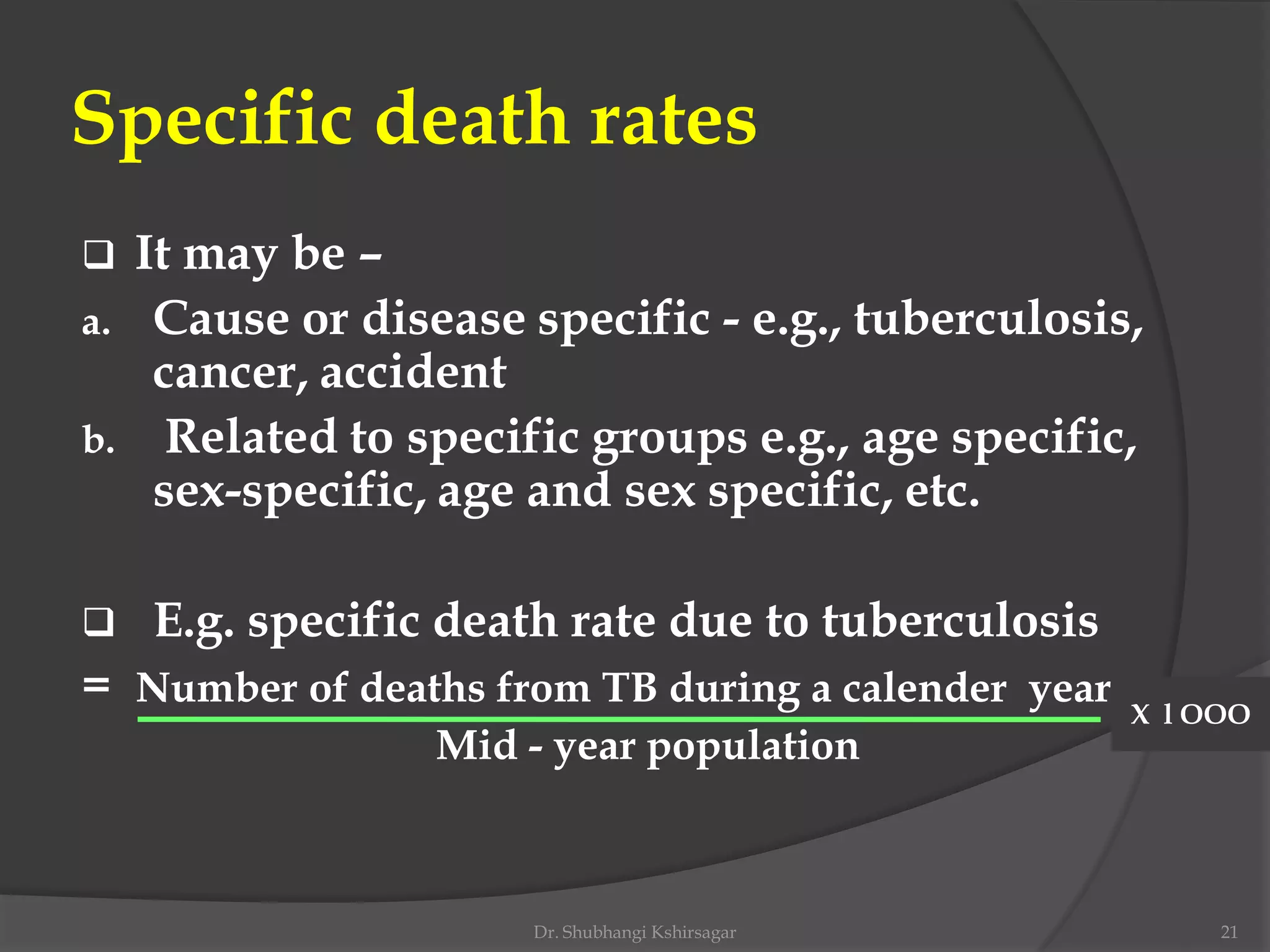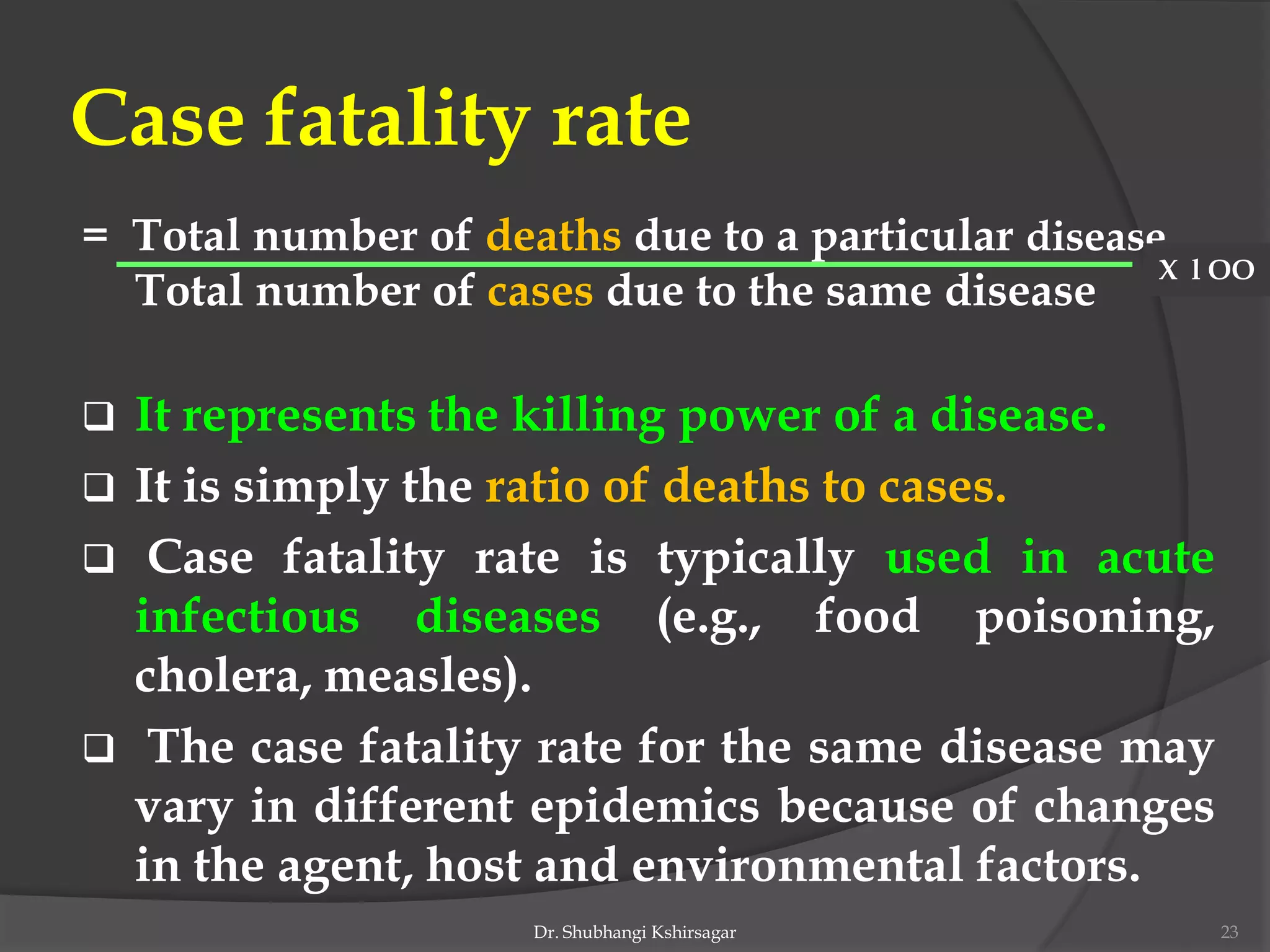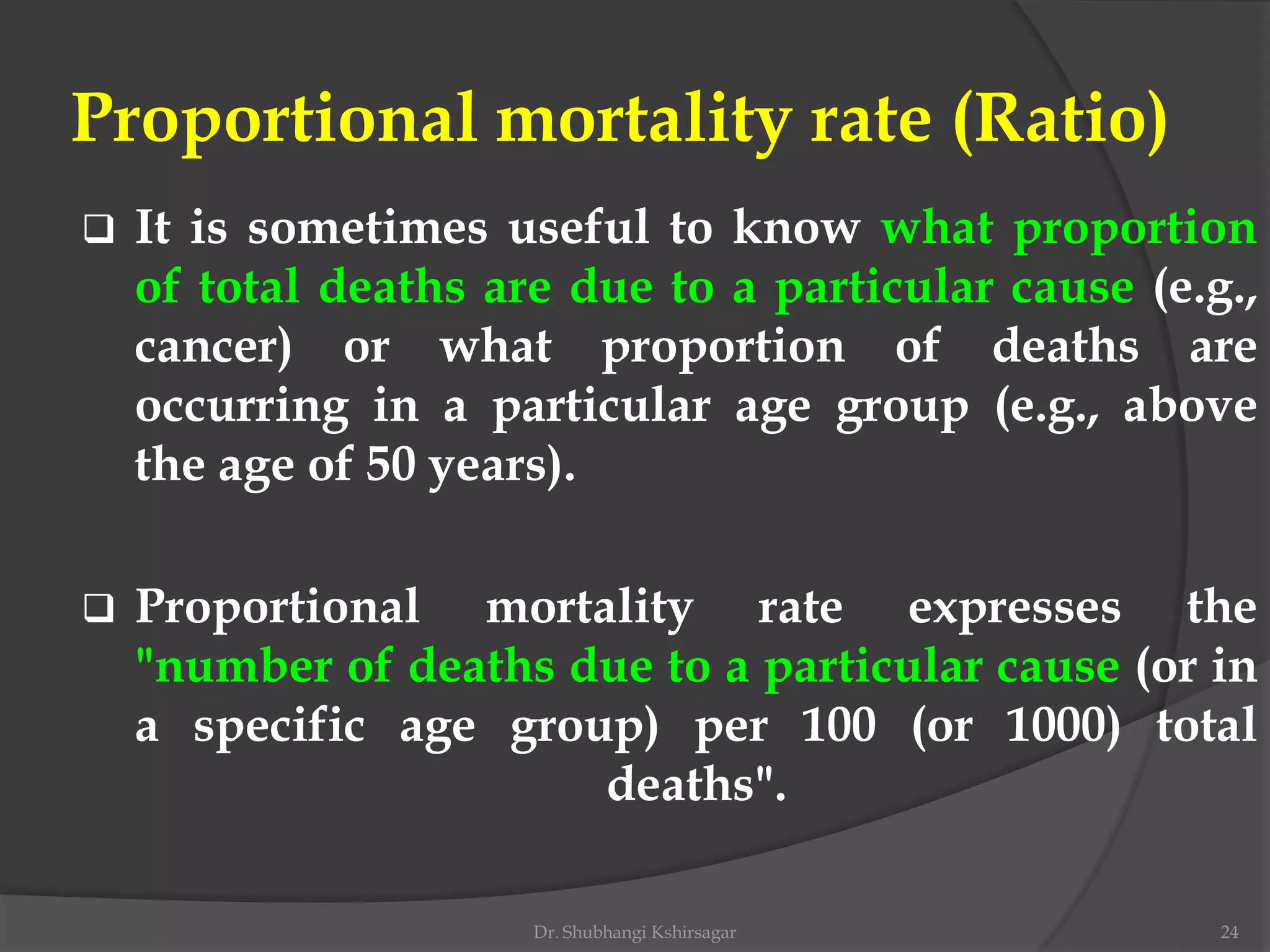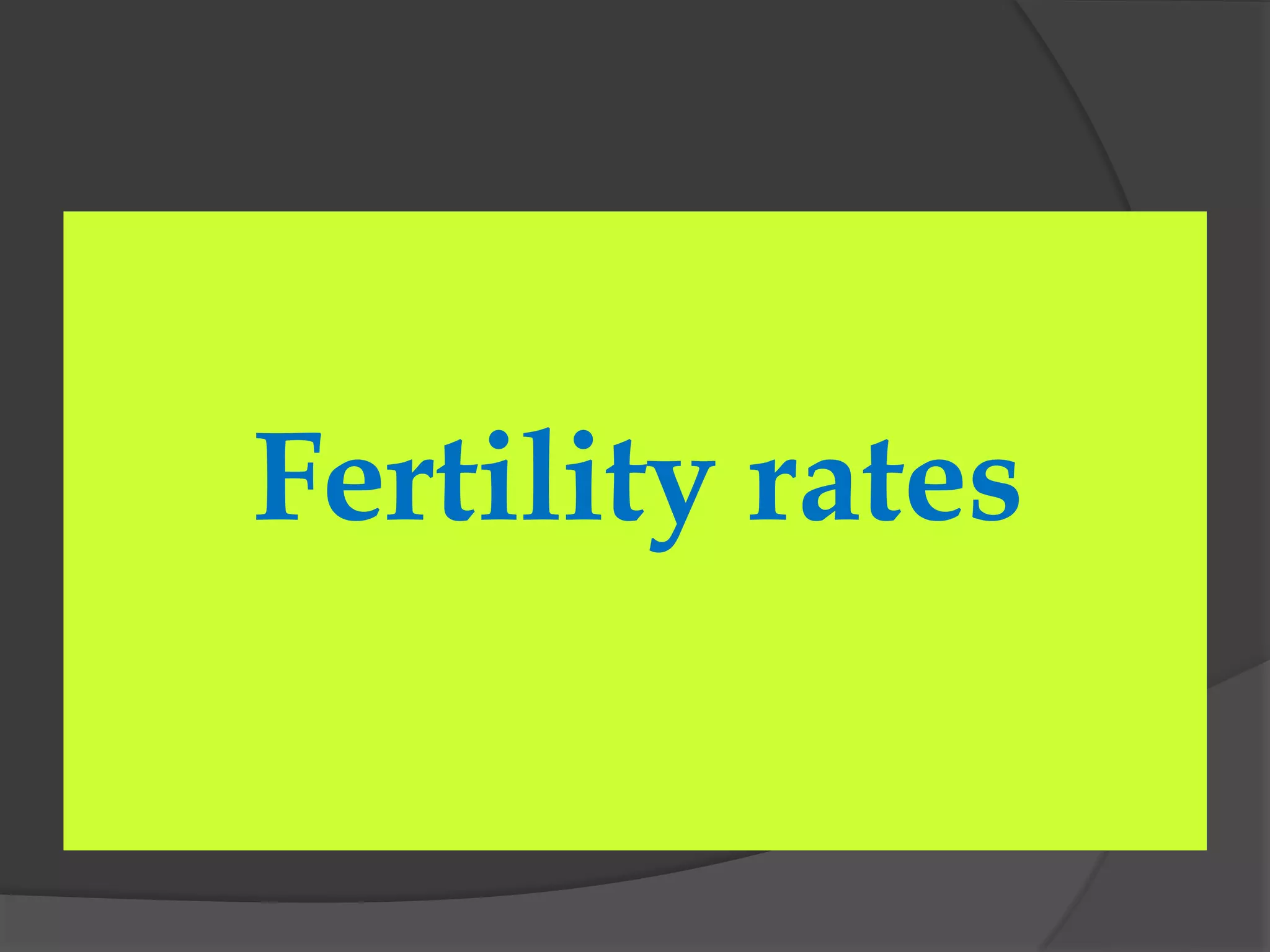The document discusses health information systems, outlining various sources of health data including census, vital event registration, and disease notifications. It emphasizes the importance of accurate data for assessing health status, managing health services, and supporting research. Additionally, it covers different statistical measures such as mortality and morbidity rates, emphasizing their role in understanding public health trends.

